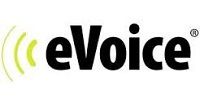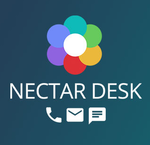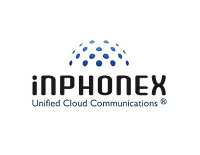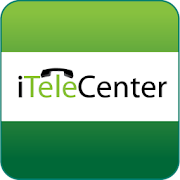What Is Call Transfer Software?
Call Transfer Software is a sophisticated application that allows for seamless call routing and transfer between several devices and phone numbers. This software has become a crucial component of modern enterprises since it enables effective management of incoming calls, resulting in better customer service and increased productivity. One of the key responsibilities of Call Transfer Software is to route calls between devices and employees.
This functionality is especially beneficial in large firms where staff may be scattered across multiple locations. With a single click, calls may be routed to the proper team member, ensuring that clients are linked to the right individual for their needs. Another useful feature of Call Transfer Software is the ability to transfer calls between multiple phone numbers.
This is useful for businesses that have a variety of contact numbers, including toll-free, mobile, and landline. Companies can use this software to integrate their multiple phone numbers into a single system, making incoming calls easier to handle and trace. Furthermore, Call Transfer Software provides comprehensive call routing capabilities, allowing organizations to tailor call transfers depending on parameters such as time of day, caller ID, and call type.
This guarantees that calls are routed to the most appropriate staff or department, resulting in shorter call wait times and higher overall satisfaction. Some Call Transfer Software also incorporates call recording and analytics functions, which give firms valuable insights into their call handling procedures. This data can help businesses discover areas for improvement and optimize their call transfer strategy, resulting in better customer experiences.
Before purchasing Call Transfer Software, evaluate its scalability and compatibility. Some applications may have a maximum number of users or devices, while others may be incompatible with certain phone systems. As a result, it is critical to conduct extensive research and comparisons to determine which choice is most suited to your company's requirements.
What Are The Recent Trends In Call Transfer Software?
Recent advancements in call transfer software have focused on improving the overall customer experience as well as corporate efficiency. Here are some significant trends to consider when selecting call transfer software for your organization:
1. Integration With CRM systems: And other business tools One of the most popular call transfer software developments is integration with customer relationship management (CRM) systems and other business tools. This enables for the smooth flow of client data and information throughout a call, allowing agents to conduct more tailored and efficient conversations with customers.
2. Artificial Intelligence (AI) And Chatbots: AI-powered call transfer software is becoming increasingly popular since it can handle routine and easy calls, freeing up human agents to handle more difficult situations. Furthermore, chatbots embedded into call transfer software can assist with call routing and providing basic information to clients before transferring them to a human representative.
3. Cloud-Based Solutions: Cloud-based call transfer software is increasingly popular among enterprises due to its flexibility, scalability, and cost-effectiveness. It supports remote access, data storage, and real-time updates, allowing enterprises to manage call transfer operations from anywhere.
4. Advanced Call Routing Options: Call transfer software now includes advanced call routing features like skills-based routing, time-based routing, and geographic routing. This ensures that calls are routed to the best appropriate agent depending on their talents, availability, or geography, resulting in higher overall customer satisfaction.
5. Call Analytics And Reporting: Data and analytics play an important role in optimizing call transfer procedures. Recent advancements in call transfer software include comprehensive reporting and analytics features that provide useful information on call volume, wait times, call duration, and other parameters. This enables firms to find opportunities for improvement and make data-driven decisions.
6. Mobile Compatibility: With the advent of remote work and the increased use of mobile devices, mobile-compatible call transfer software has become necessary. This allows agents to easily move calls between their desktop and mobile devices, ensuring that customers receive uninterrupted service.
Benefits Of Using Call Transfer Software
Call transfer software is a strong and necessary tool for businesses of all kinds, including startups, SMBs, and large corporations. It enables for the smooth and seamless transmission of incoming calls from one employee to another, ensuring that customers are quickly linked to the appropriate individual. But, what are the special advantages of employing call transfer software? Let's have a closer look.
1. Improved Customer Experience: One of the most significant advantages of employing call transfer software is its effect on the customer experience. It guarantees that clients are linked to the appropriate individual who can respond to their problems or questions quickly. This saves clients time and decreases irritation, resulting in a more enjoyable experience overall.
2. Increased Efficiency And Productivity: Call transfer software automates the call transfer process by eliminating the need for manual transfers. Employees can focus on their duties without being interrupted, which improves efficiency and output. Furthermore, it enables rapid and easy call transfers, saving time and effort.
3. Improved Call Management: Call transfer software enables firms to properly manage incoming calls. It enables call prioritization, ensuring that urgent or critical calls are promptly routed to the relevant person or department. This aids in managing phone volumes during peak hours, resulting in shorter wait times for customers.
4. Cost-Effective Solution: Call transfer software saves organizations money by eliminating the requirement for specific call transfer gear. It runs as a virtual system, giving it a cheap choice for enterprises of all sizes. It also minimizes the need for additional workers to handle call transfers, resulting in lower labor expenses.
5. Adjustable Features: Call transfer software includes a variety of adjustable features that may be tailored to a business's specific needs. For example, some software supports personalized welcomes and hold music, resulting in a more professional and branded experience for clients. Businesses can also define call routing rules depending on their preferences, ensuring that calls are sent to the appropriate employee or department.
Important Factors To Consider While Purchasing Call Transfer Software?
When it comes to selecting call transfer software, there are various variables to consider to ensure that you make the right option for your company. Because call transfer software is so important in maintaining continuous communication and increasing customer experience, you should thoroughly consider your options before making a decision.
Here are the major aspects to consider when selecting call transfer software:
1. Form Of Call Transfer: First and foremost, decide what form of call transfer your company requires. There are several sorts of call transfers, including blind transfer, attended transfer, and warm transfer. Each type has advantages and disadvantages, so it is critical to evaluate your individual requirements and select software that provides the type of transfer that best meets your company objectives.
2. Compatibility: When selecting call transfer software, compatibility is an important issue to consider. Make certain that the software is compatible with your existing phone system and integrates effortlessly into your present process. This will prevent compatibility difficulties and allow a smooth transition to the new system.
3. Scalability: Your business's needs may vary over time, so choose call transfer software that can grow with you. Consider the software's growth potential and whether it can meet your future communication needs.
4. An intuitive And user-friendly: Interface is required for effective call transmission. Look for software that is simple to use and requires little training for your staff. This will save time and resources while also ensuring a smooth transition for your workforce.
5. Customization Options: Each organization has distinct requirements, and your call transfer software should be able to meet those demands. Look for software that allows you to customize it with features like personalized greetings, call routing rules, and call logs.
6. Advanced Features: Consider the call transfer software's additional capabilities, which can improve communication and the entire customer experience. Call recording, analytics, and queuing are all features that can help you streamline your operations and gain useful information.
7. Pricing: Finally, investigate the call transfer software's pricing and payment choices. Make sure to weigh the pricing against the features and perks available to ensure that you are receiving the best value for your money.
What Are The Key Features To Look For In Call Transfer Software?
Call transfer software is a valuable resource for businesses of all sizes and sectors. It enables seamless and fast handling of incoming calls, ensuring that customers and clients are connected to the appropriate agent or department. With so many options on the market, it might be difficult to determine the best call transfer software for your specific requirements.
we'll go over the important features to look for in call transfer software so you can make an informed purchase.
1. Ease Of Use: One of the most important elements to consider while choosing call transfer software is its usability. Any program that is difficult to use or navigate may cause unnecessary delays in call transfers. Look for a service that provides a straightforward and intuitive interface, allowing your personnel to transfer incoming calls with minimal training.
2. Compatibility: Make sure that the call transfer software you choose is compatible with your existing phone system or communication configuration. This includes the type of phone (landline, VoIP, etc.) and any other software or hardware that your company uses, such as CRM systems. Compatibility concerns might cause technical difficulties and disruptions in the call transfer procedure.
3. Customization Options: Every organization is unique, as are their call transfer requirements. A good call transfer software should include customization options to meet your individual needs. This may feature bespoke call forwarding rules, personalized wait music, and the option to transfer calls to multiple departments or extensions.
4. Call Recording: Call recording is an essential function for tracking and improving call quality, training new personnel, and settling customer complaints. Look for call transfer software that allows you to securely record and archive calls, preferably in the cloud, for easy access and management.
5. Call Analytics: Access to crucial call statistics is critical for firms trying to improve their call transfer process. Call analytics features offer useful information about call duration, wait times, and abandonment rates. These measurements can help you discover bottlenecks and make the necessary modifications.
6. Integration With Other Tools: As previously said, compatibility is essential when picking call transfer software. However, it is also critical to assess how well the software connects with the other tools that your company employs. Some call transfer software integrates with major CRM systems, increasing productivity and reducing errors in call transmission.
7. Scalability: As your organization expands, your call transfer requirements may shift. It is critical to select software that can support your future growth and needs. Look for a solution that is scalable, so you may add more users or features as needed.
Why Do Businesses Need Call Transfer Software?
Call transfer software, commonly referred to as call routing software, is an essential tool for businesses of all kinds. It enables the efficient and smooth handling of incoming calls, resulting in a great customer experience and increased productivity. In this buyer's guide, we will go over the main reasons why organizations require call transfer software and how it may help their operations.
1. Streamlined Call Routing: One of the key benefits of employing call transfer software is its ability to simplify call routing. It eliminates the need to manually transfer calls from one department or agent to another, saving time and lowering the likelihood of errors. Incoming calls can be automatically routed to the relevant department or agent based on predefined rules, ensuring that clients are always connected to the correct person.
2. Improved Customer Experience: In today's competitive business environment, providing outstanding customer service is critical to a company's success. Call transfer software contributes to attaining this goal by allowing firms to manage incoming calls quickly and effectively. Customers are no longer put on wait or transferred to the wrong person, resulting in frustration and discontent. This leads to a better overall customer experience and improves the company's reputation.
3. Cost Savings: Using call transfer software can result in significant cost savings for enterprises. Companies incur expenses for manual call transfers, such as long-distance rates and personnel time spent handling calls. Call transfer software, on the other hand, lowers these expenses by routing calls over the internet, avoiding long-distance charges, and automating tasks that would otherwise need manual labor.
4. Increased Efficiency: Call transfer software helps firms manage calls more efficiently, resulting in higher overall productivity. Calls can be routed fast and precisely, minimizing the time spent handling each one. Furthermore, with features like voicemail and call queuing, organizations can handle a large volume of calls without missing any crucial ones. This, in turn, improves efficiency and productivity.
5. Analytics And Monitoring: Another significant advantage of call transfer software is its capacity to track and analyze call data. Businesses can utilize this information to better understand customer behavior, call volume, and agent performance. This data can then be utilized to optimize call handling procedures and enhance customer service. Call transfer software also enables for real-time call monitoring, ensuring that quality requirements are fulfilled and faults are resolved quickly.
How Much Time Is Required To Implement Call Transfer Software?
The time required to develop call transfer software varies according on a few major parameters. First, examine the size and complexity of your organization's current phone system. If your company's phone system is vast and complex, it may take longer to integrate and confirm that the call transfer software functions properly.
Furthermore, the chosen call transfer software may take longer or shorter to implement, depending on its capabilities and compatibility with your current system. Another crucial consideration is the IT team's preparedness and availability. If your team is already overburdened with other projects and activities, implementing call transfer software may take longer because it will need to be worked into their schedule.
On the other hand, if your IT staff has set aside time and resources purely for software implementation, it may be accomplished more rapidly. In general, the implementation of call transfer software might take anything from a few days to several weeks. During this period, you should thoroughly teach your personnel on how to use the software and address any technical issues that may develop.
It is also critical to speak with your service provider and establish realistic expectations for the deployment process. It is also worth noting that some call transfer software allows for a rapid and easy setup process, needing little effort from your IT personnel. These solutions frequently include user-friendly interfaces and comprehensive support and resources to help with the deployment process.
Finally, the time necessary to implement call transfer software will be determined by your specific business requirements, team preparation, and the product's capabilities. It is critical to conduct extensive research and choose a dependable and effective call transfer software, as successful installation can significantly benefit and streamline your organization's communication processes.
What Is The Level Of Customization Available In Call Transfer Software?
Call transfer software provides a number of features and functionality to assist businesses in managing incoming calls. One essential factor to consider is the degree of customisation accessible with this type of software. This can have a significant influence on both the user experience and the overall efficiency of call handling. The level of flexibility in call transfer software might vary based on the provider and package selected.
However, most software vendors provide a variety of customization choices to meet their clients' specific needs and tastes. When assessing call transfer software, consider the following essential customizability factors:
1. Call Routing options: Effective call routing is critical for ensuring that calls are sent to the appropriate department or agent. Call transfer software enables organizations to tailor their call routing rules based on variables such as time of day, caller ID, and department. This enables a more tailored call transfer process and assures optimal call handling.
2. Call Handling Preferences: Call transfer software enables organizations to specify call handling options such as hold music, caller greetings, and voicemail messages. This can help to establish a consistent and professional brand image while also improving the caller experience.
3. Interaction With Other Software: Call transfer software companies frequently provide interaction with other company tools such as CRM systems, helpdesk software, and communication platforms. This enables for seamless phone transfers, as well as a more personalized and efficient call handling process.
4. User Permissions: For larger firms with various departments and agents, it is critical to have control over who may access and manage calls. Call transfer software allows users to restrict or provide access to specific call transfer functions, ensuring that critical information is protected.
5. Personalized Reporting: Call transfer software's customizable reporting function enables firms to track and assess their call handling performance. This can assist discover areas for improvement and make the required changes to enhance call handling.
Which Industries Can Benefit The Most From Call Transfer Software?
Call transfer software is an extremely useful tool for businesses of all sizes and sectors. However, certain industries will gain more from this software than others. In this buyer's guide, we'll go over which sectors can profit the most from call transfer software, and why.
1. Customer Service Sector: The customer service sector places a high value on excellent customer communication. Call transfer software can help customer support teams handle high call volumes more efficiently. Customer support teams can reduce wait times and increase customer satisfaction by utilizing technologies such as automatic call routing and queuing.
2. Healthcare Industry: In the healthcare industry, every second is valuable. Call transfer software can help healthcare staff improve communication and provide timely medical aid. Call transfer software, which includes features such as medical history-based routing and fast transfer to on-call physicians, has the potential to save lives.
3. Sales And Marketing: In the sales and marketing industry, time is money. Call transfer software can assist these teams by providing capabilities such as call recording and thorough call analytics, which allow them to collect and analyze call data to optimize their sales and marketing efforts. Furthermore, call transfer software allows sales teams to engage with potential clients faster, resulting in improved lead conversion rates.
4. Remote Work Industry: In today's remote work culture, call transfer software is critical for ensuring flawless communication between remote team members. Remote team members may efficiently interact and cooperate regardless of their physical location, thanks to capabilities such as conference calling and on-demand call switching.
5. Banking And Finance Business: The banking and finance business handles sensitive and secret data. Call transfer software that includes features such as secure call transfers and call recording can assist financial organizations protect consumer data while still meeting regulatory standards.
6. Education Industry: Call transfer software can help staff, students, and parents communicate more efficiently. Call queuing and automated call transfers to suitable departments can help to rapidly handle questions and complaints, increasing overall satisfaction and communication within schools and universities.
Conclusion
In conclusion, selecting the correct call transfer software is critical for businesses looking to optimize their communication procedures. With so many options accessible, it might be difficult to make a selection. However, by studying the essential features, compatibility, and pricing of various call transfer software, businesses can make an informed purchase that matches their individual requirements.
Additionally, elements such as user-friendliness, customer support, and add-on capabilities can help to improve the effectiveness of the chosen call transfer software. We strongly advise you to test out demonstrations and free trials before making a purchase to confirm that the software matches your business needs. When picking call transfer software, consider the tool's scalability and versatility. As your company expands and your communication requirements change, the software should be able to adapt and support these changes.
Finally, do not underestimate the value of training and support while adopting new call transfer software. Look for providers who give extensive training and good customer service to ensure a smooth transition and optimal software utilization. We hope you found this buyer's guide useful in making an informed selection for your business. Consider your specific requirements, budget, and future growth plans when selecting the best call transfer software to improve your communication procedures and positively influence your organization.
















